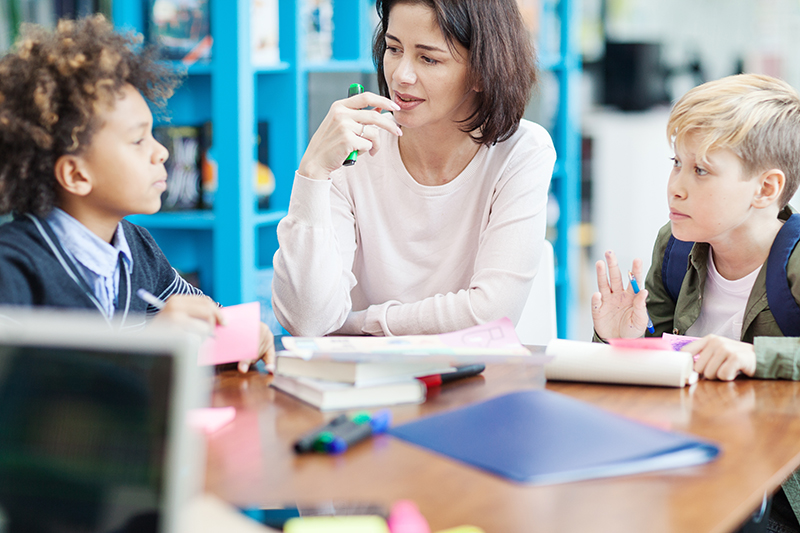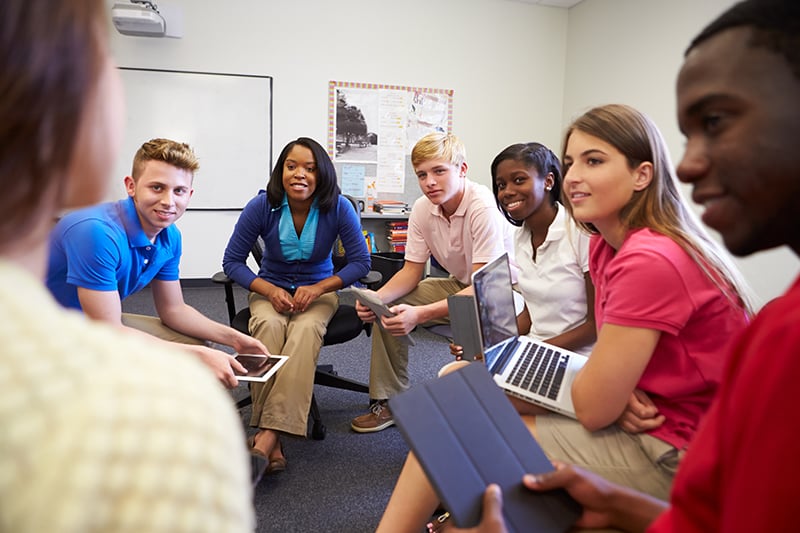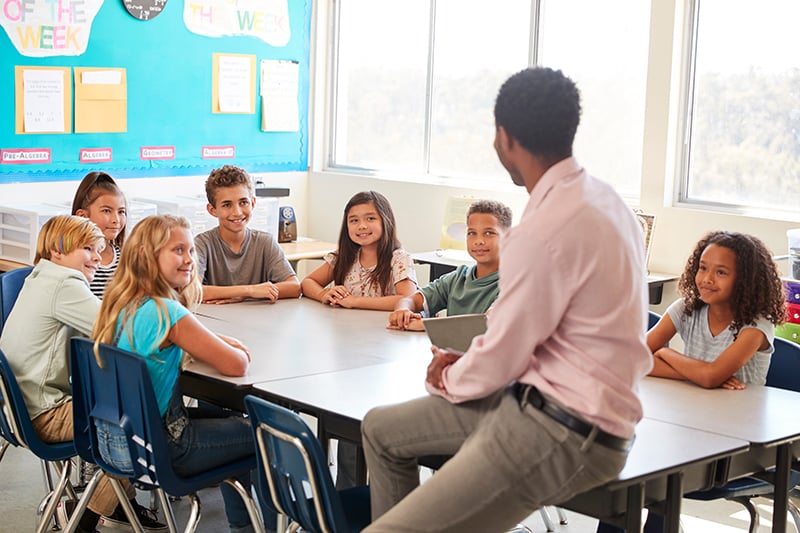Using Reflection Questions to Help Build a Culture of Learning in your Classroom
As educators, we all hope that our classrooms are places where students want to be. That they come to our class knowing that they are in a safe place where their ideas and contributions are valued and expectations are clear; where they have agency and choice in their learning and they are seen and respected as unique individuals with much to offer the world. Creating this kind of classroom culture and environment is at the heart of our work as teachers, and essential if we want our students to learn and thrive during their time with us. The way we use questioning in our classrooms has a huge influence on the culture of our classrooms, especially the use of reflection questions.
A reflection question is any question that requires students to look over what they have learned, and to engage in metacognition. We can use them as a tool to build, reinforce and support the elements of a positive classroom culture. They can help us build relationships with students, and help students develop their identities as learners. They can communicate what we value in our classroom and help students to develop high expectations of themselves. And, they can help create an environment in which students feel safe enough to take the academic and social risks necessary for them to learn.

In VEX STEM Labs, reflection questions provide teachers and students the opportunity to build and enhance the culture of learning in their STEM classrooms and beyond. For example, the discussion prompts in the Share section of VEX GO and VEX 123 STEM Labs contain discussion questions that are designed to help students not only improve their understanding of STEM concepts, but also to increase their ability to collaborate with others. Each Share section contains questions such as “Did your Code Base complete the parade route successfully the first time? What did you change in your project to make improvements?” or “What is something that worked well for your group today that you can apply to future group work?”
Each time we ask a reflection question, it offers an opportunity to contribute to the development of a positive culture of learning. For example, if we take the question “If you were going to do this project again, how would you change it?”, we can evaluate it to see how it can affect the elements of positive classroom culture.
From a relationship-building perspective, the above question sends the message to students that you trust them to look objectively at their work and provide feedback to you, and that you value their perspective on how they are learning. It indicates that you view the student-teacher relationship as a partnership, rather than from a top-down perspective.

Asking students to answer this reflection question thoughtfully also provides them with the opportunity to further develop their identities as learners, as they engage in metacognition about the project they just completed. When they think about what they would change moving forward, it requires them to think through the process they used and how to improve upon it, again putting the agency for this improvement into their own hands, communicating that they are not only capable of improving on their work but that it is expected of them, while at the same time acknowledging the value that mistakes and imperfections are an integral part of the learning process. This has the added benefit of helping to make the classroom a safe space for mistake-making and risk taking.
That’s a lot of power for one question! But, how we ask the question and guide the discussion surrounding each question matters. What can we do to ensure that reflection questions are adding to a positive, warm, and rigorous culture of learning in our classrooms?
- Be intentional about reflection questions, crafting them with a goal in mind. When you are planning a lesson, think about the kinds of reflection questions that will meet your students' needs at that point in time. For instance, if you know your students need help in being more effective collaborators, make sure their reflection questions are guiding them to think about how successful they are in group discussions, and what they can do to improve.
- Ask follow-up questions that require students to further dig into their own thinking. Their answers will make their learning visible to themselves, other students and the teacher. Require students to respond with examples and evidence, so they are not able to rely on a simplistic response. If you ask a student “What would you do differently if you were to do this project again, and why?” You may get an answer like, “I would code my robot differently, because it didn’t work.” Follow it up with “How would you change your code? Why would you make those choices? What do you think will be the outcome of making that choice?” Ask students to be specific and provide examples when they are answering, and encourage them to support their assertions with artifacts of their work, such as VEXcode projects, robot builds or engineering notebooks.
- Actively try to avoid falling into the pattern of student reporting, or the Question/Respond/Evaluate pattern, which functions as a test of fact-based knowledge or whether students have been paying attention but does not require higher-order thinking. For example, “Where did you encounter difficulty when working on this project, and how did you respond to it,” allows you to ascertain not only whether a student understood the concepts they were working with, but also how they were thinking about it, giving you valuable insight into what kinds of help and/or challenges you will need to provide for that student moving forward.
- Try giving students a protocol to use when answering, especially if students are struggling with how to respond meaningfully to reflection questions. The National School Reform Faculty has an ever-expanding list of them here: https://nsrfharmony.org/protocols/
- Make allocating time and energy for reflection questions a priority. As reflection often occurs towards the end of a class period, it is easy to forget to leave time for it or even to let it slide. As with all classroom practices that truly make a difference, reflection questions are a “go slow to go fast” situation – devoting time and focus to your students’ reflections will help build the foundation they need to know themselves as learners and to learn more, faster in the long run.
- Use techniques that improve the depth and quality of student thinking. In Doug Lemov’s book, Teach Like a Champion, he reminds us that “norms of answering shape norms of thinking” (270). He recommends techniques such as “Wait Time” in concert with “Cold Calling”. He advises counting silently to three in your head before calling on anyone, and providing students with guidance on how to use that silent time to attend productively to the question they have been asked. Cold calling signals to students that they are all expected to answer, and eliminates calling on the same three students that always raise their hands.
Over time, the kinds of engagements that deliberate and intentional reflection questions foster contribute greatly to a culture of learning in the classroom. They strengthen the teacher-student relationship and increase students’ ability to engage in metacognition and build their identities as capable learners. They communicate classroom norms and values, as well. Used with intention, reflection questions can help us to have the kinds of classroom environments students look forward to being a part of and remember long after they’ve moved on.
Aimee Defoe is a Senior Education Developer at VEX Robotics.
Like this article? Discuss it in the VEX Professional Learning Community.
